Remembering the Light Horse
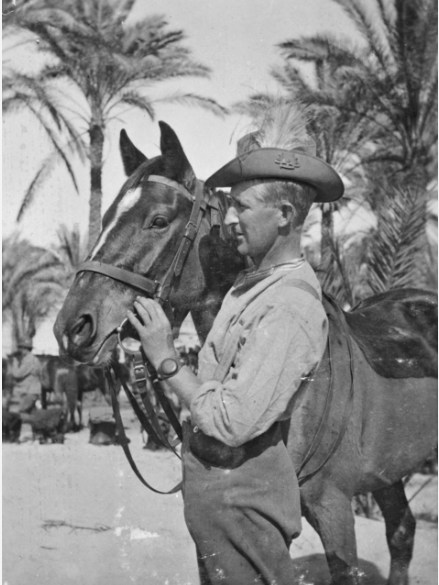
Waler Data Base @ Facebook. Image: Trooper (Tpr) Norman McLeod Bethune, 8th Light Horse Regiment. Tpr Bethune, an irrigation farmer from Sale, Victoria, enlisted in September 1914, serving at Gallipoli and in Palestine… Egypt…AWM
Please enjoy our collection of archival photos, such a privilege to have this history of the Light Horse documented at the Australian War Memorial and in other collections to help us remember the sacrifice made by the men and the horses.
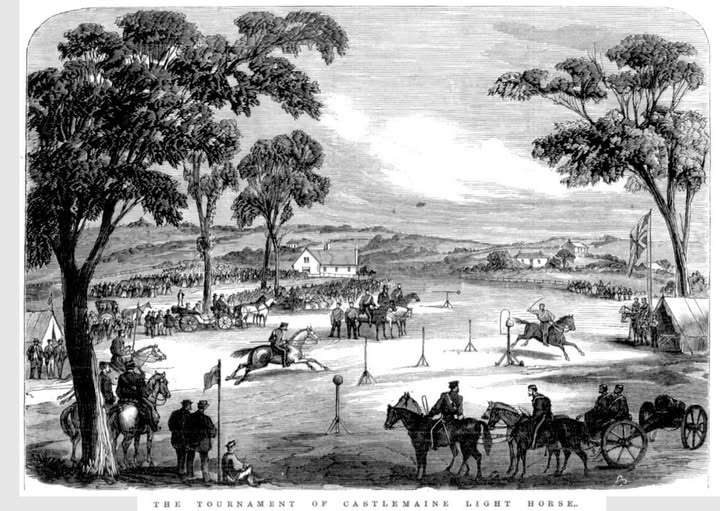
Illustrated Home News for Australian Readers, 9th November, 1868
As seen from the illustration, they were into military horses early in Castlemaine, a strong horse breeding centre. There was a horse sale every week for many years – that’s a lot – some places only had annual sales. The big traders attended. Their draughts, half-breds and India remounts sold extremely well.
T.S. Dunston & Co., with Spencer, McKean & Co., had weekly horse sales and a horse bazaar in Castlemaine. As well, A.A. Miller had a big weekly horse sale there, often such as in December 1906 demand outstripped supply; “good useful sorts” were the most in demand.
There are sales results from Castlemaine in old newspapers from the 1800’s to the 1930’s. A 1933 sale for example had good horses of the utility and “Indian remount” types and attracted high prices.
Thousands of coach horses were bred and sold there in those times. Cobb & Co.’s first run in 1853 was Melbourne to Castlemaine, It became a big coaching centre.
Many Light Horsemen came from Castlemaine and many took their own horse to WW1. There was a big military camp there in 1915.
Note : Between 1901 (Federation) and the start of WW1 in 1914, Australia had compulsory military training for men aged between 12 and 26. It was legislated in 1909 and passed as law in 1911.
The training took many forms. If a man could supply himself with a horse and was within riding distance of a training facility – many country towns became training places – he could join a mounted unit. If not, he was infantry. In this time many light horse units formed, and horsed artillery. Australia thus was a useful source of colonial cannon fodder for Britain to draw on for war purposes.
From 1911 it was called “Universal training Scheme” and went through to 1929. Many boys and men were killed over the years from 1901 to 1929, in training. There were three levels:
Junior cadets for 12–14 year old boys
Senior cadets for 14–18 year old males
Home defense militia, officially known as Commonwealth Military Forces, for 18–26 year old men.
People often wonder why we had so many men in mounted militia units “playing soldiers” – it was because they had no choice.
‘Portrait of Walter Fenwick Matthews, Australian Field Artillery (Militia) mounted on a horse. A clerk from Jamestown SA, Matthews later enlisted in the AIF and embarked as the Quarter-Master Sergeant with the 3rd Field Artillery Brigade Ammunition Column from Adelaide on HMAT Medic on 20 October 1914. Later commissioned as a Lieutenant, he served with a number of Artillery units before being posted to 13th Field Artillery Brigade. He was killed in action on 27 May 1917, aged 30, and was buried in the Bancourt British Cemetery, France.’
Photo taken 1905. AWM
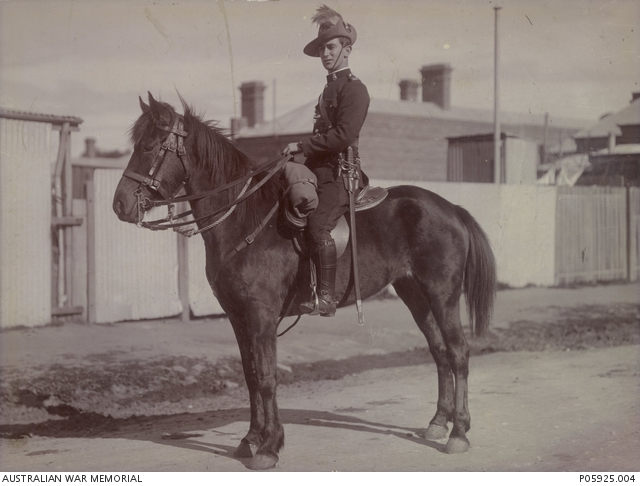
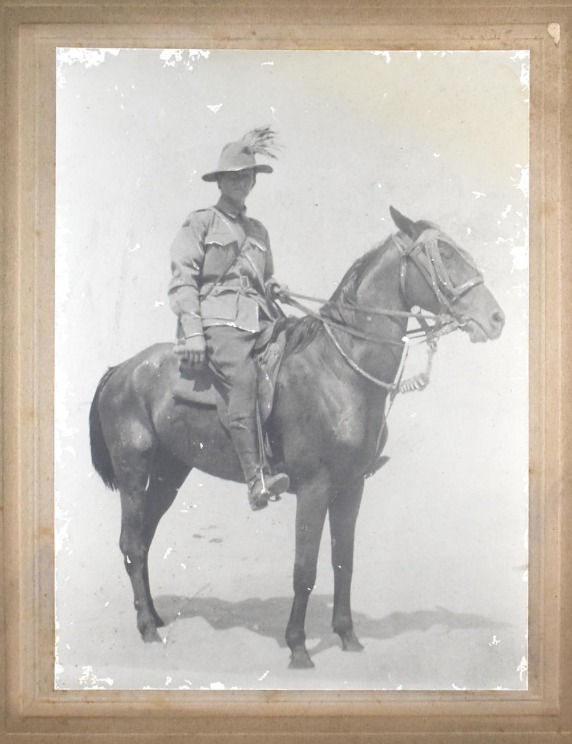
‘1917… Trooper Harry Riseborough and his mount ‘Gus’ during training at Officer School, Jordan.
Born in Port Pirie, South Australia, in 1897 Henry (Harry) RISEBOROUGH enlisted on 10 December 1914, listing his age as 18 years and his occupation as a labourer at Lime Lake, Wagin. He trained at Guildford and served in the Middle East in the 10th Light Horse Regiment in the Machine Gun section…. returning to Australia in April 1919 on HMAT Euripides.’
Collections W.A. Princess Royal Fortress Military Museum
Carew Reynell was in the 9th Light Horse. He joined up in 1914, soon being promoted to Major. By May 1915, Carew had been sent to Gallipoli. His C.O. was killed there and Carew was made the C.O., being promoted to Lieutenant-Colonel. His wife Maty travelled to Egypt too. She started the League of Loyal Women and the Battalion Clubs in South Australia, and for some months ran, at her own expense, a tea house for AIF Light Horsemen at Heliopolis, Egypt.
Carew Reynell was killed on the 27th-28th of August 1915 at Hill 60 on Gallipoli while leading a charge, he was only 31 years old. His horse had doubtless remained in Egypt and was probably passed on to another officer. His son Richard went on to be an airman, being killed over England in WW2. A good brave man, never to be forgotten. Lieutenant Colonel Carew Reynell, AWM
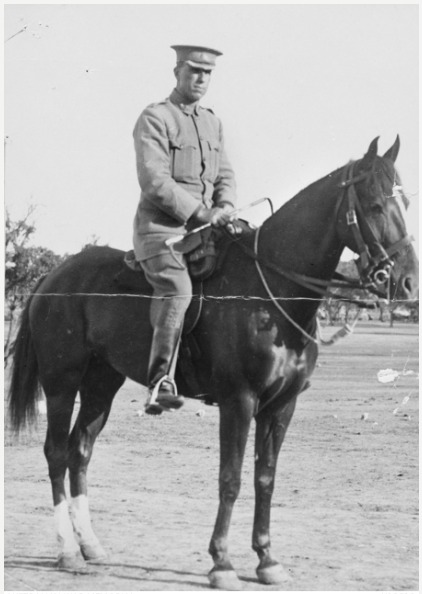
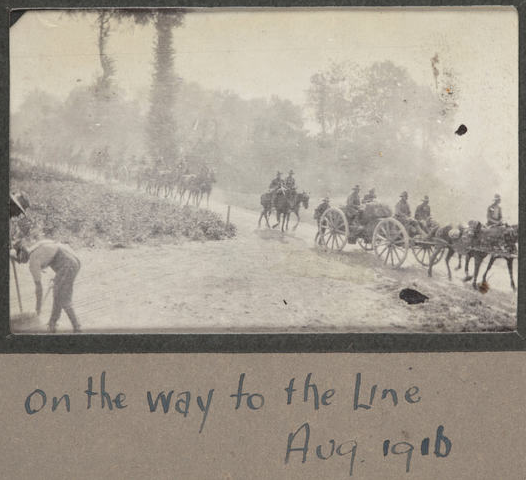
‘Black and white photographic print which shows a long line of horse-drawn wagons, most likely part of the 13th Field Ambulance, making its way to the frontline. According to the 13th Field Ambulance Diary, it can be assumed that this specific photograph was taken nearby the towns of Herrisart or Warloy-Baillon. The field ambulance was always situated close to the frontline to receive sick and wounded soldiers. Each field ambulance generally consisted of 23 wagons, including 2 water carts, 3 forage carts, 6 general supply wagons, 10 ambulance wagons and a cooks wagon.
It is one of 95 black and white, and, sepia toned photographs taken in France during World War I, attached to a photograph album. The album includes a few photographs of enemy prisoners, the war cemetery at Warloy, a wrecked German ambulance and images of the local French people.
Most photographs are of Albert and surrounds so it would seem probable that most were taken during and after the Battle of the Somme (1916). In addition there are also photographs dated 1917. The photographs were taken by Private John Edward Lord, 13th Field Ambulance, and brought back to Australia by him and compiled in an album at the end of the First World War.’ Museums Victoria
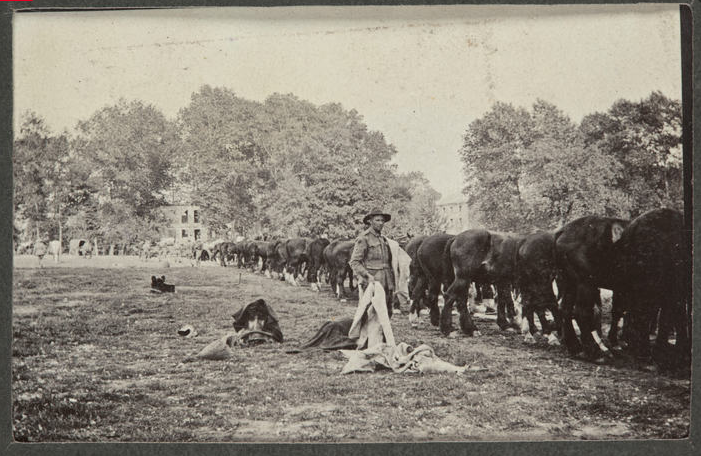
Museums Victoria
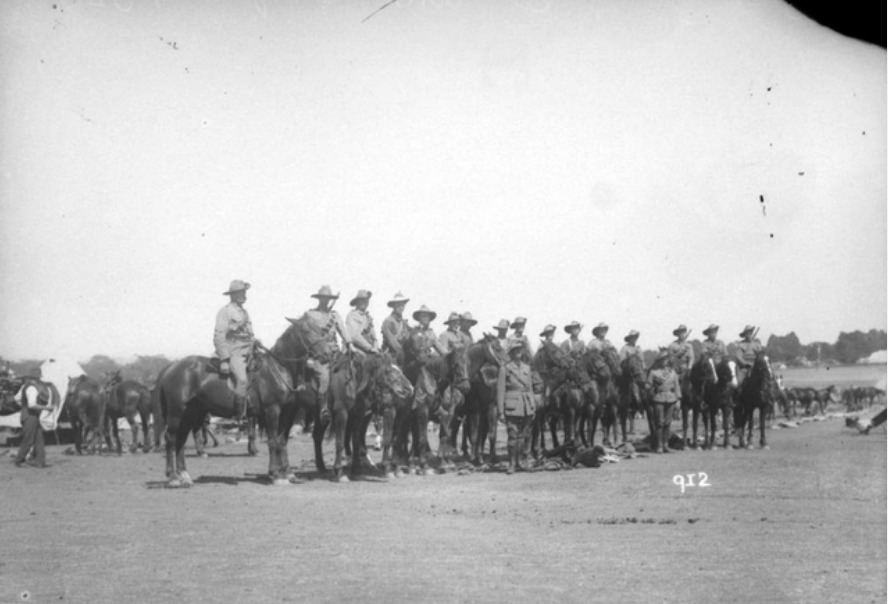
Images below: The 13th Australian Light Horse moving up past Gressaire Wood to participate in the attack that morning near Bray by the 9th Infantry Brigade; A patrol of the 13th Australian Light Horse passing through Gressaire Wood, on their way to the forward zone; Outdoor portrait of Lieutenant (Lt) Reginald Morris Seymour Brett, 13th Light Horse Regiment
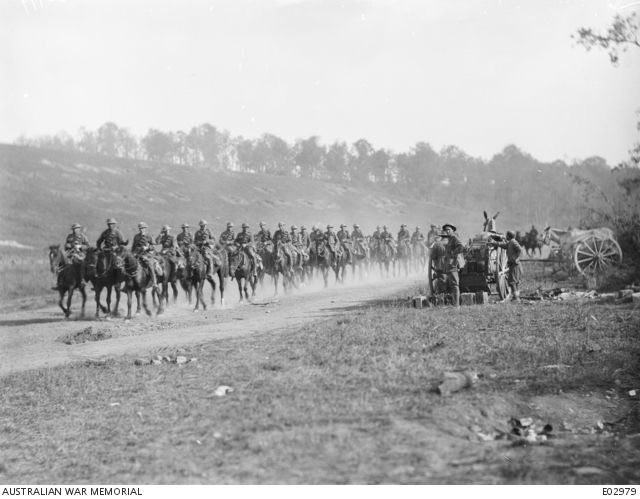
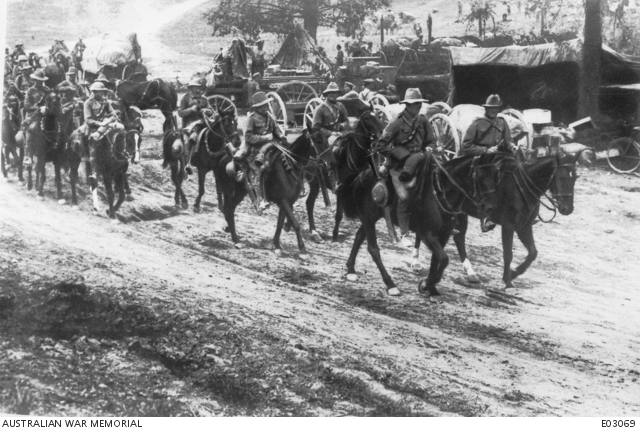
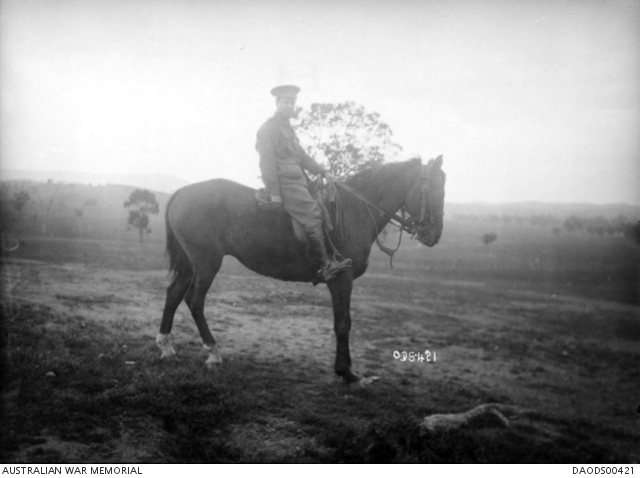
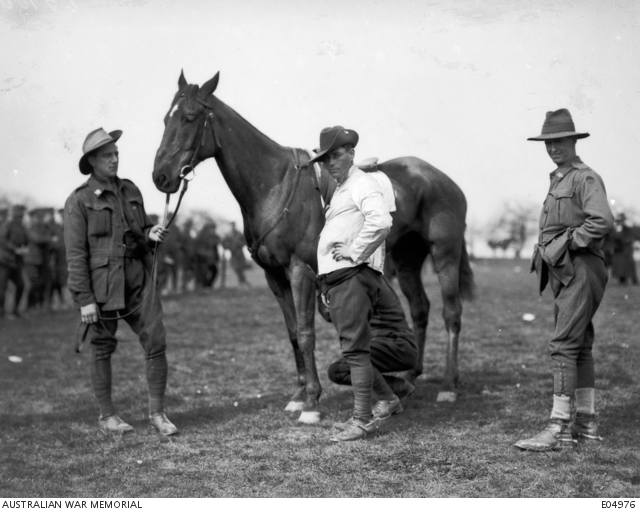
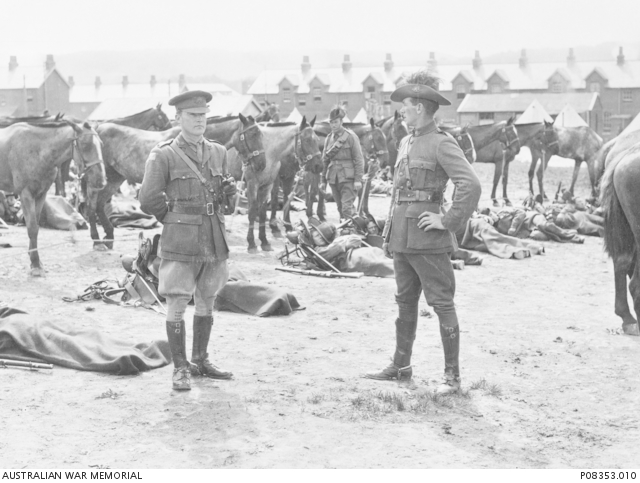
Images above: An informal portrait of a jockey, probably 1763 Private E J Anderson, 13th Light Horse Regiment, (13th LH) and three unidentified soldiers standing with ‘Stralis’, a horse belonging to Captain B K Burnie’s (13th LH), on the 2nd Australian Divisional Racecourse; Posed portrait of officers and men of what is probably the 13th Light Horse Regiment in camp in England
“Postcard written by Light Horseman Lieutenant Dudley Townley to Freda Gwyn, dated 15 November 1918. The front features a photograph of a horse named ‘Old Bill’, who the inscription indicates boarded for war with the Australian Light Horse in 1914. Horses ridden by the Light Horsemen were not allowed to return to Australia under quarantine rules. Old Bill may have been transferred to the Artillery sold or killed after the photo was taken.
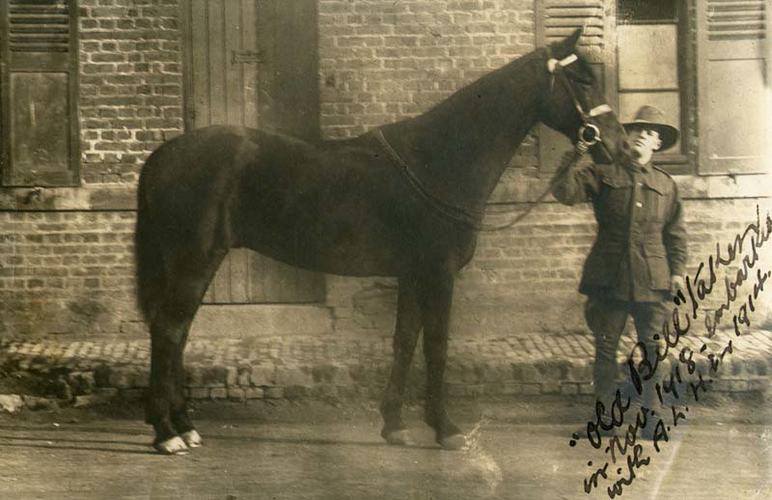
The author describes receiving news of the Armistice in this postcard, while he was in the 13th Australian Light Horse Regiment. According to the ANZAC Corps Mounted Regiment diary (from January 1918 the 13th Australian Light Horse Regiment was part of a unit known as Australian Corps Mounted Troops), on 11 November 1918 the Regiment was moving in the vicinity of Levergies, just north of St Quentin, France. Townley writes on this postcard: ‘We were on the road on the top of a very bleak hill when a car came along with a couple of staff officers on board who told us that hostilities had ceased. We did not even know there was a chance of anything like that – not having heard any news for 3 or 4 days.’
Lieutenant Dudley Arnold Langford Townley served with the 2nd, 5th and 13th Australian Light Horse Regiments during World War I. After the war he married Freda.” Museums Victoria.
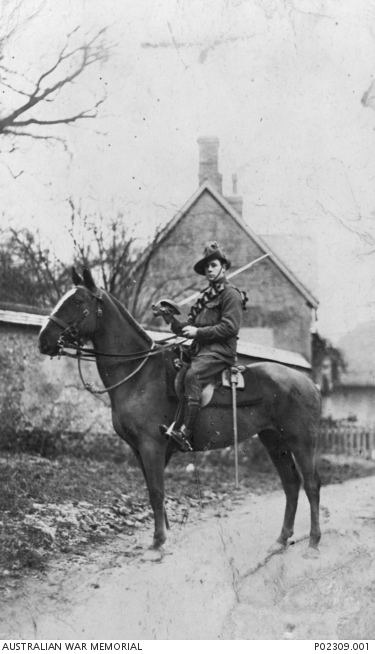
Image and information from AWM. Photo taken in England c. 1916. Gutsy young man.
‘Trooper (Tpr) Eugene Vogel Finster, 1st Anzac Mounted Regiment, mounted on his horse with his sword drawn and “at the rest”. This unit was originally the 13th Australian Light Horse Regiment which was assigned to the 1st Anzac Corps for service on the Western Front. This unit was issued with swords and trained as light cavalry. Tpr Finster was an original member of the 2nd Field Ambulance enlisting on 1914-08-19, served at Gallipoli, wounded in action and repatriated to Australia on 1915-08-06 and discharged “Medically Unfit” from the AIF on 1916-02-28. He re-enlisted on 1916-03-27 at the AIF Camp Bendigo and was discharged “Services No Longer Required” 1916-07-21. He enlisted again on 1916-07-26 and was assigned to the 1st Anzac Mounted Regiment embarking for France on 1916-10-26.
On the night of 1917-03-25 Tpr Finster, along with about thirty other men, made their billets in the Bapaume town hall when a mine, left by the retreating Germans eight days before, detonated shattering the whole building and killing two French deputies and a number of men employed at an Australian Comforts Fund coffee stall. Fatigue parties dug through the night and the next day rescuing six men trapped in the rubble and a group of officers and men from the 13th Field Company and the 1st Anzac Mounted Regiment who were trapped in different cellars. Tpr Finster was seriously injured by the explosion and was repatriated to England and then to Australia on 1917-07-22 and discharged from the AIF for the third time on 1917-10-30. Private Finster enlisted in the Army for “Home Service” in the Australian Medical Corps (AMC) at the No 11 Australian General Hospital (11AGH) from 1919-03-24 to 1919-09-08 and from 1919-10-28 to 1920-01-22. Finster’s service number in the 2nd Field Ambulance was 98 and 1912 in the 1st Anzac Mounted Regiment.’
“Sergeant Beard mounted on his horse Paddy ca. 1908.
Band Sergeant Beard of the 13th Australian Light Horse Queensland Mounted Infantry. His horse, Paddy, was previously owned by the notorious bushranger, Paddy Kenniff, the last bushranger hanged at Boggo Road Jail.”
Qld State Library
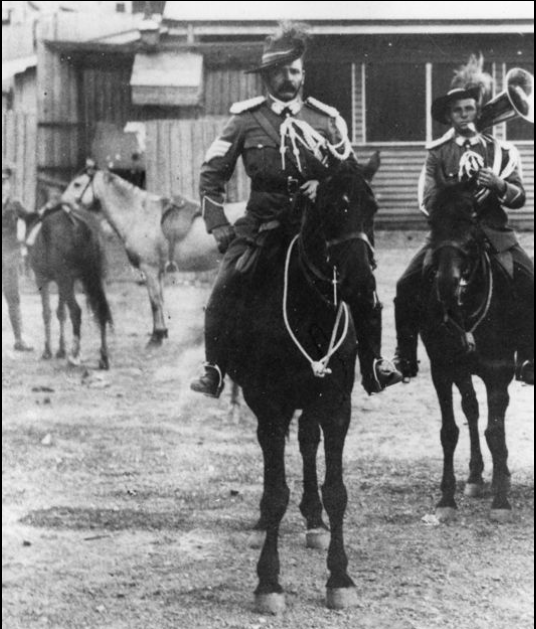
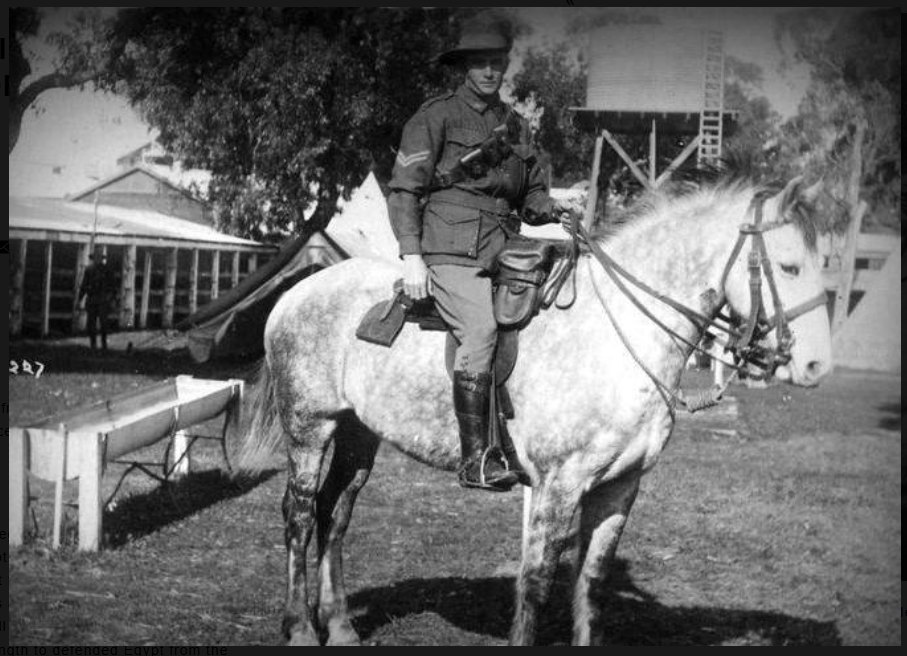
Image and information: Collections WA.
“KENWORTHY, 10 Light Horse… photograph of 2807 Corporal Reginald Kenworthy from West Guildford (now Bassendean), 19th Reinforcements, enlisted 7 December 1915, returned 16 July 1919.
The Regiment served dismounted in Gallipoli and fought at the charge at the Nek on 7 August 1915, and at Hill 60 on 29-30 August. The only Victoria Cross awarded to a Light Horseman recognised the valour of Lieutenant Hugo Throssell at Hill 60.
After Gallipoli the Regiment was bought up to strength to defended Egypt from the Ottoman Army advancing on the Suez Canal. Through 1916 they drove the Turks across the deserts of Sinai, participating in the battles of Romani and Magdhaba.
In 1917 as part of the Desert Column they advanced into Palestine and participated in the bloody battles to break the Gaza-Beersheba line and helped capture Jerusalem. They participated in the Es Salt Raid in May 1918. In August they were equipped with swords and retrained as cavalry. In this role they took part in the rout of the Ottoman army in the Jordan Valley, a campaign the light horse referred to as “The Great Ride”. In September the 10th was the first formed regiment to enter Damascus.
Turkey surrendered on 30 October 1918. After the end of the war, the regiment saw action in putting down the Egyptian uprising of 1919. The Regiment was one of the few to return home as a formed unit.”

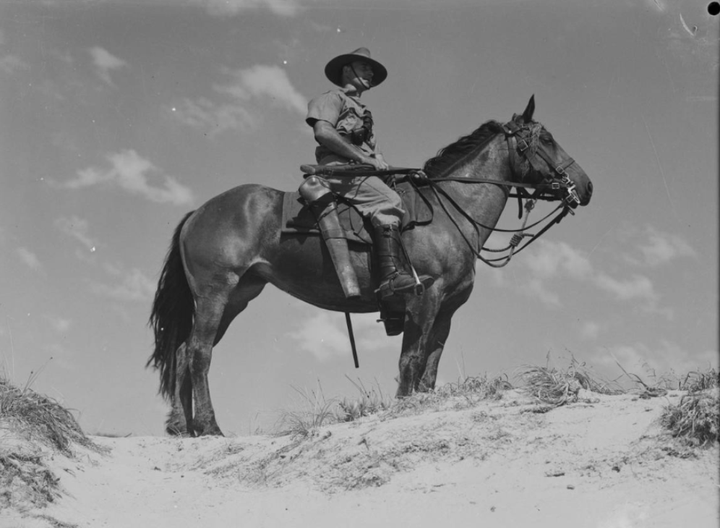
Images: Branding the remounts scene at the Light Horse camp, Guildford. Western Mail, 4th Dec 1914; Tenth Light Horse camp at Bunbury. Lone rider. 1941. State Library W.A.
Probably because it was war, there are very few photos of the Tenth Light Horse in training at Guildford. There is a memorial statue in Stirling Square at Guildford today. Photos from City of Swan Facebook page.
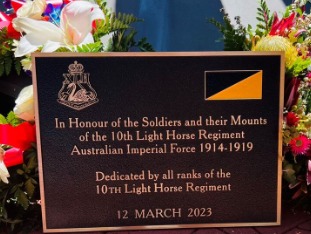
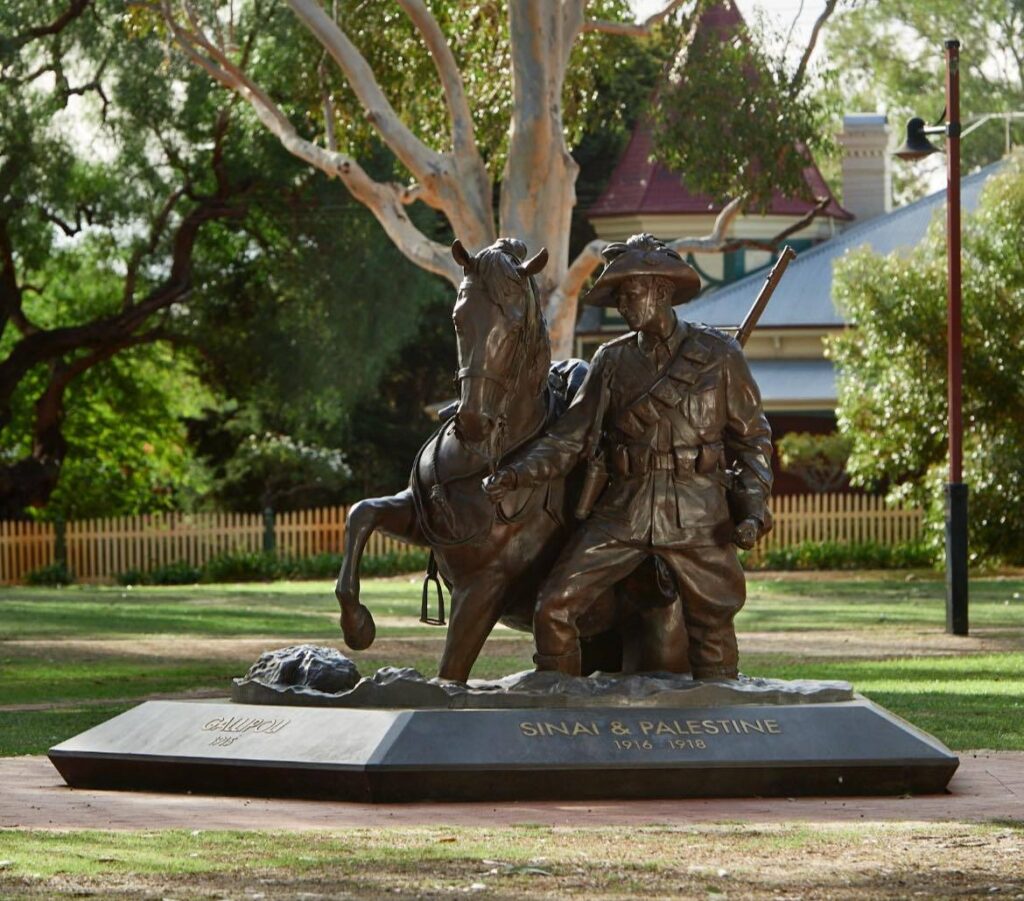
Images: Sunday Times, 3rd August, 1919. The Tenth Light Horse, by Dryblower.
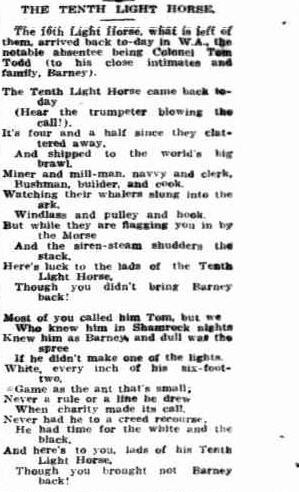
Just came across a poem about the 10th Light Horse – written in 1919, in memory of their popular officer Lieutenant-Colonel Thomas Todd – known as Barney to all his men.
He was born in NZ in 1873 and was in a volunteer force there in 1898, then in 1899 joined the 2nd New Zealand Contingent for South Africa (Boer War), becoming a Captain in the NZ Mounted Forces. He won a DSO in Africa for courage.
Captain Todd moved to W.A., then joined the 10th Light Horse for WW1, being made a Major and during the war, Lieutenant-Colonel. His horse Banabooka was bred in W.A., by Barbarossa out of a Pistol mare. Pistol of course by the immortal Carbine. He won a race in Cairo, organised by the Light Horse there and keenly contested.
Barney made it through the war, including the hell of Gallipoli, but tragically died of a heart attack in January 1919, before coming home.
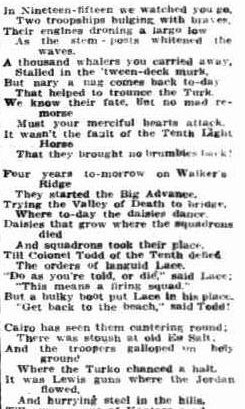
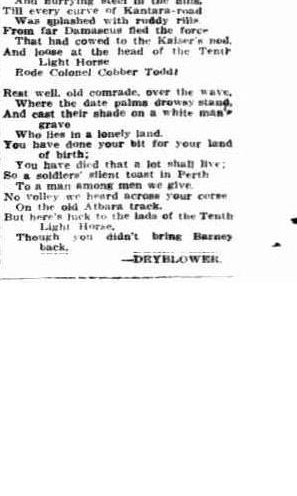
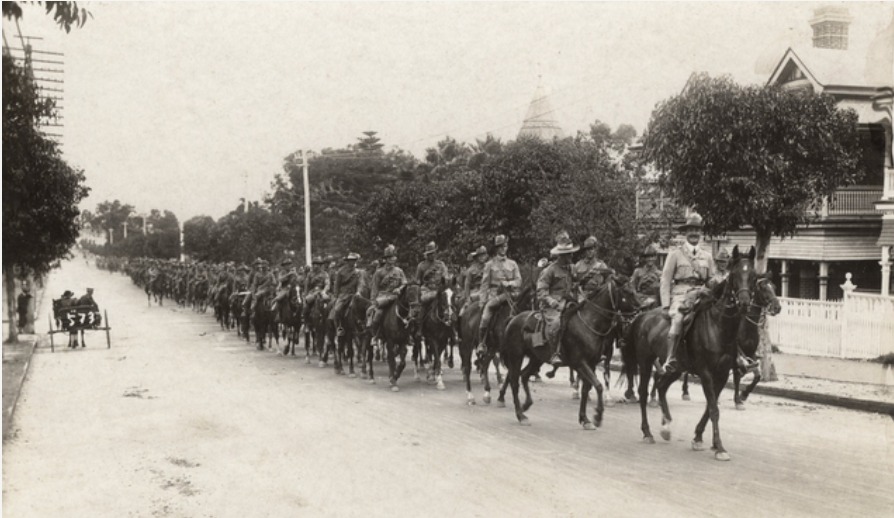
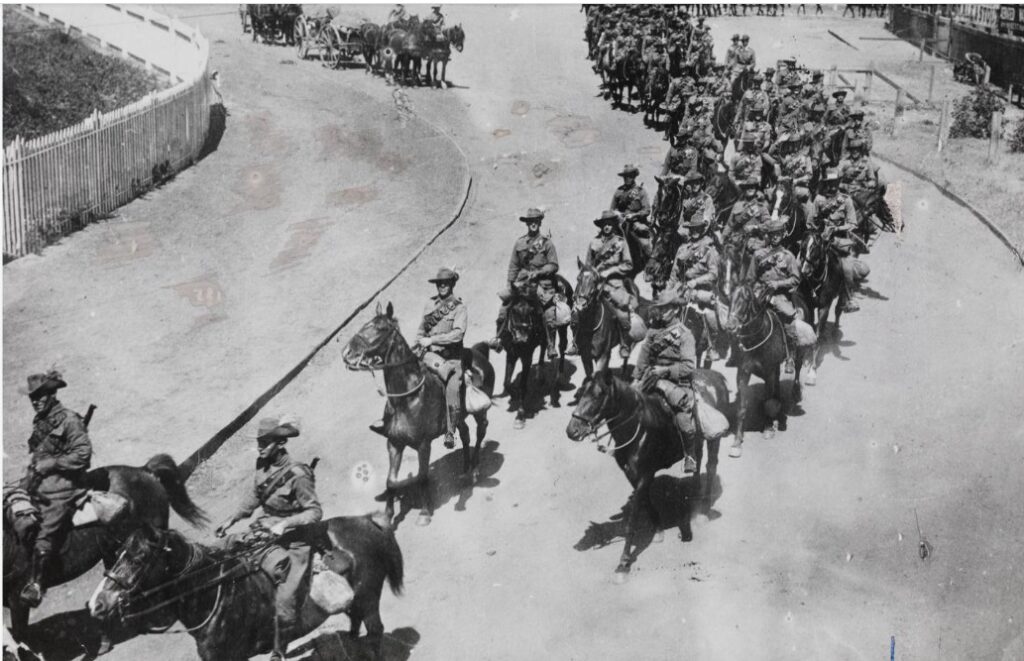
Images: The 10th Light Horse Regiment, led by Major John Thomas Marr Todd DSO. 30th November, 1914. AWM; 10th Light Horse Regiment march from Claremont Showgrounds, 6 January 1915. State Library W.A.
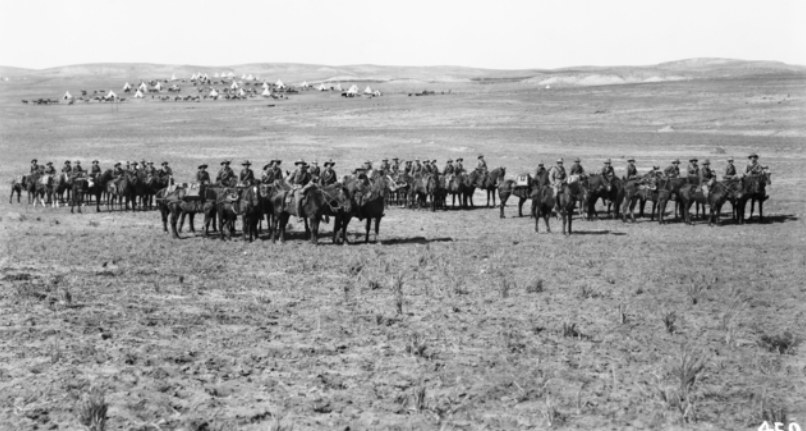
And let’s not forget the mounted bands, adding pomp, circumstance and cheer as required.
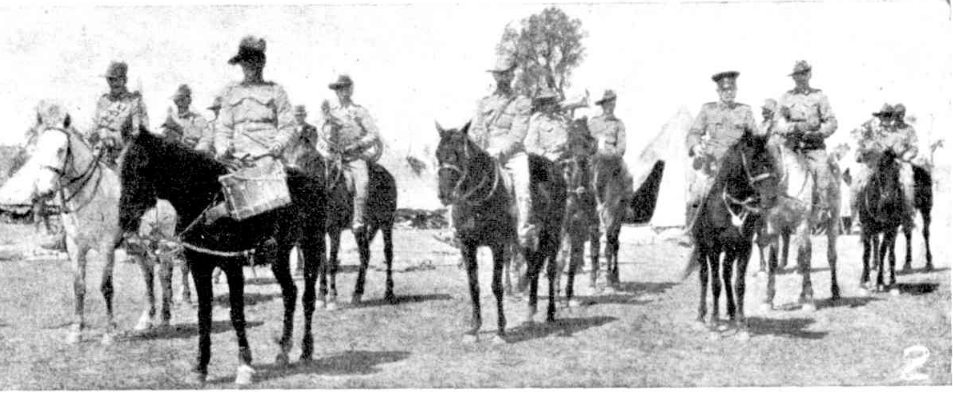
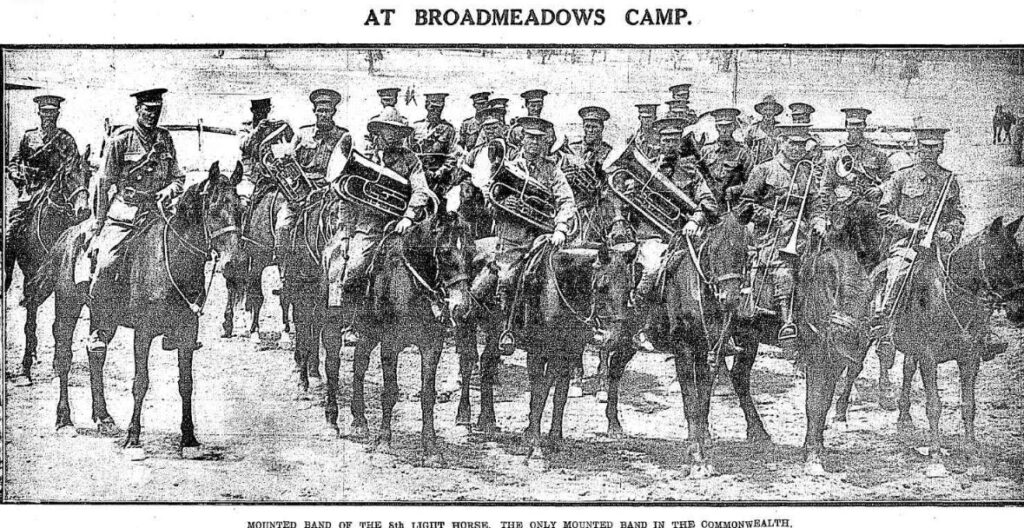
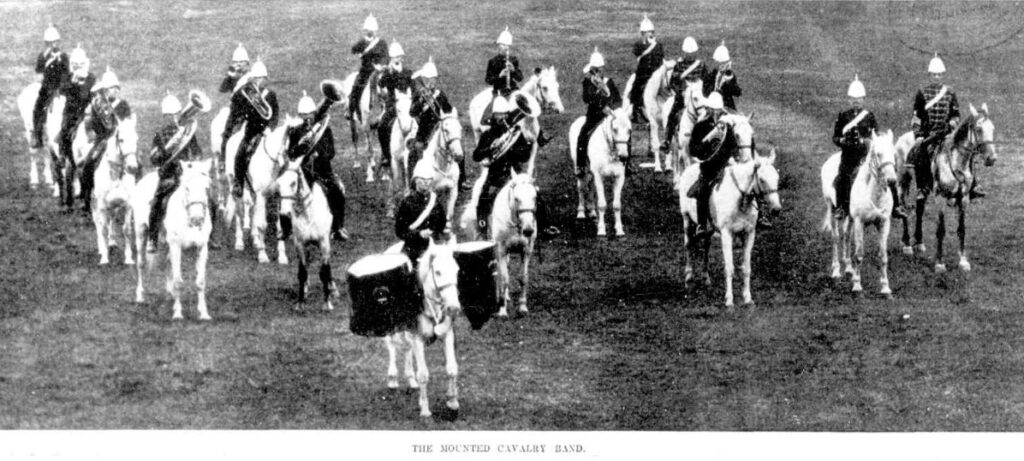
Images: Punch, 18th February 1915; Leader (Melbourne), 14th January 1910
Some AWM photos of the 12th Light Horse, 11th December, 1918. Tripoli, Lebanon, taken at a last parade after war ended. We are so lucky to have this wonderful photographic history recorded and readily accessible.
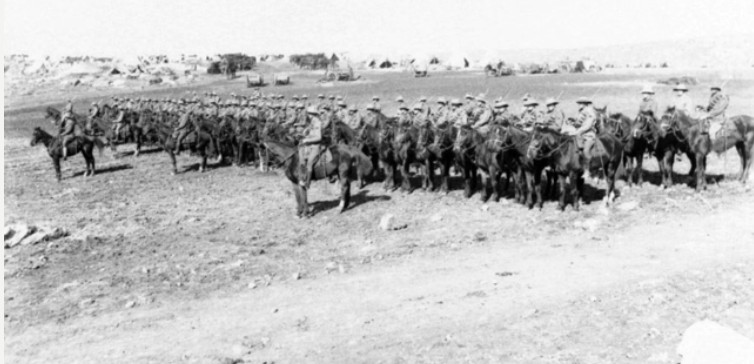
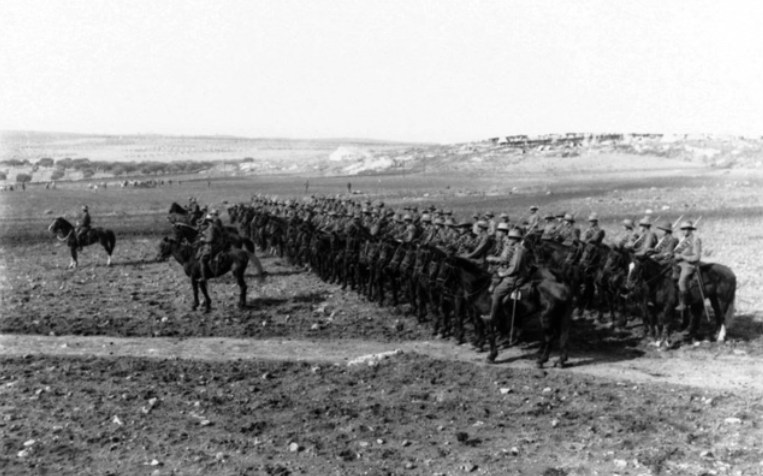
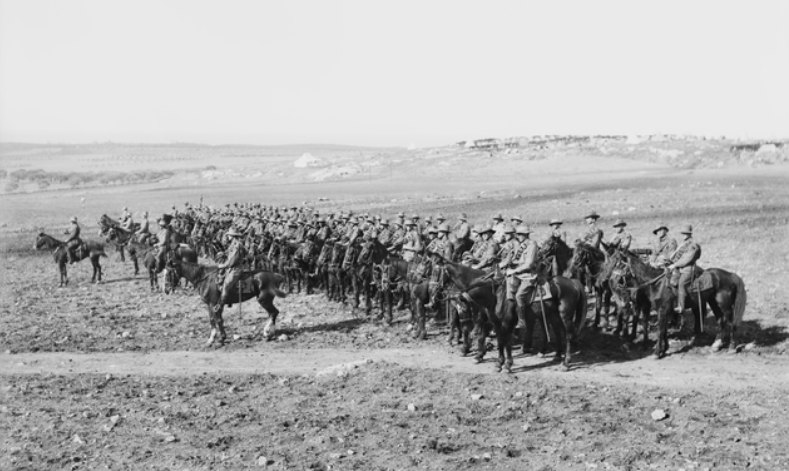
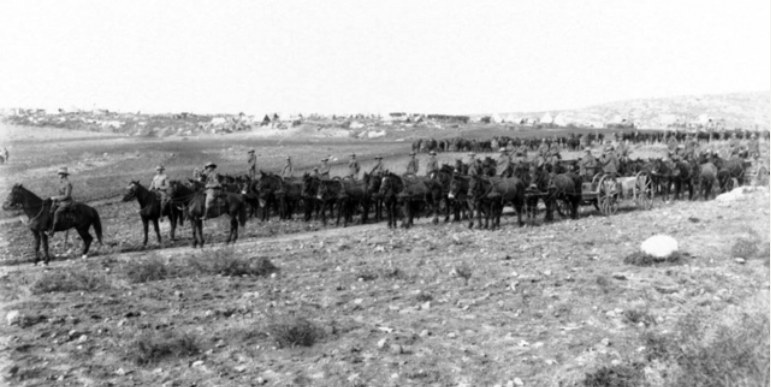
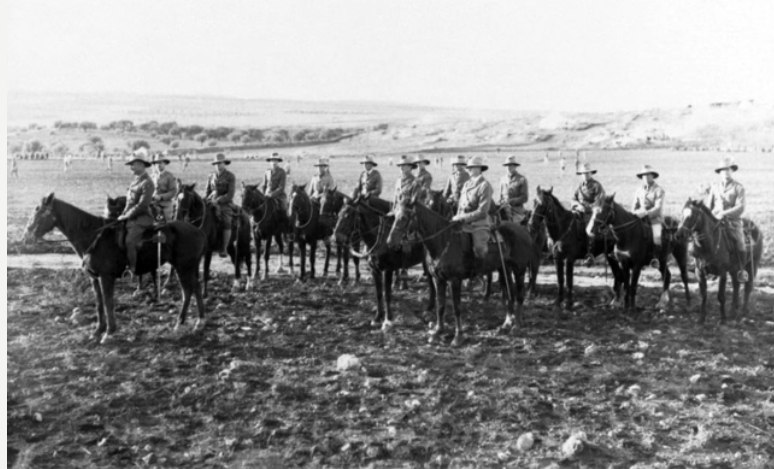
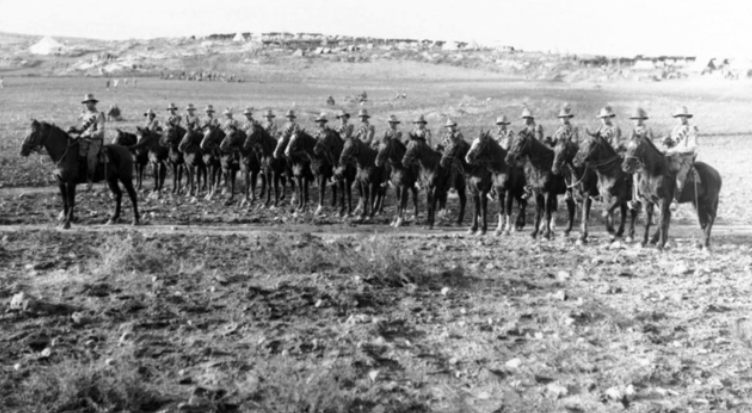
A Squadron; B Squadron; C Squadron; The 1st line transport; Group portrait of unidentified officers; A group of unidentified Non-Commissioned Officers and men